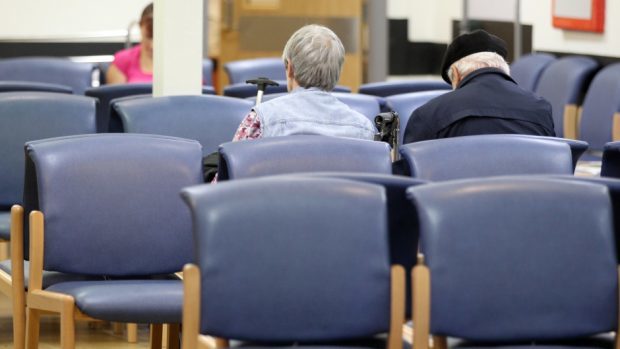With one in 10 visitors to accident and emergency waiting longer than four hours to be seen and nearly one in three of us waiting longer than three months for an appointment with a specialist, what can you do if you have the misfortune to find yourself waiting interminably for treatment?
Absolutely nothing is the answer, despite the NHS having a whole smorgasbord of targets for waiting times.
This is just one of the strange things about the current system of waiting time targets. The targets are supposed to be for the benefit of patients but, for many years, an argument has raged about whether they actually work. Now the NHS in England has announced that it will scrap the four-hour A&E target.
Scotland, along with other devolved nations, is keeping it. So, who is right?
Among those criticising England’s move to scrap waiting time targets is the Royal College of Emergency Medicine. It says that, although waiting time targets were a blunt tool, they do generally improve the situation for patients.
I was surprised to hear that this group of doctors were in favour of waiting targets. In my former role as BBC Scotland’s health correspondent, one of the most irate phone calls I ever received was from the head of the Scottish branch of this organisation.
It was in the midst of a “winter crisis” when patients were stacked up on trolleys in corridors and waiting time targets were not just breached but blown apart. He was furious my reporting of the targets seemed to suggest the fault lay with A&E and pointed out A&E is simply the “front door” to the whole hospital. If the beds are full elsewhere, the patients all stack up in emergency departments.
He had a point, of course, and calmed down greatly when I promised to make that as clear as possible in future reports. Clearly he was no fan of the four-hour target, which gave the misleading impression his department was the problem. If the college is now supporting four-hour A&E waiting targets, I can only assume the debate is raging as fiercely inside that organisation as it is outside.
The problem with most of the targets is that they measure hours, days and weeks, not people and outcomes. An elderly person who falls at home, goes to casualty, is admitted to a ward within three hours and 55 minutes but picks up an infection and never goes home again is counted as a “success” by the standard of A&E targets. Had she waited four hours and five minutes for a comprehensive package of care which got her back home and prevented further falls, her life would have been immeasurably better, but the NHS target failed.
It’s the same with waits to see a specialist. If I was waiting for an appointment at an arthritis clinic, I would much rather know that the target is for 75% of patients at this clinic to have less pain in six months, rather than the current target of an appointment in three months with the outcome unknown and unmeasured.
NHS Scotland is failing time-based targets more and more often, so our perception of the health service is that it is getting worse but in fact treatment has never been safer and more effective.
The situation has become so ridiculous that the Patients Rights (Scotland) Act of 2011, which sets a legally binding waiting time standard, is not worth the paper it’s written on. Although the law states that you should not wait longer than 12 weeks for an outpatient appointment or planned hospital treatment, if you do wait longer, there is nothing you can do.
The Act is not enforceable by legal action – so there is no penalty. It’s like a cruise company offering you a luxury cabin, and then not offering a refund when you’re not even allowed to board.
So let’s get clever with our measurement systems. Let’s spend valuable parliamentary time introducing redress for patients but also finding targets which focus the whole system on the right results. Time-based targets work well for railways. When it comes to the health service let’s not measure how long it takes to reach a destination, but instead make sure that the journey ends with better health.

